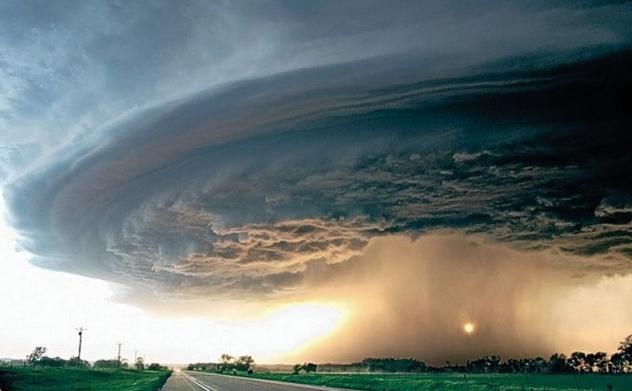American climatologists have come to the conclusion that the increase in average annual temperatures on Earth not only leads to a more frequent occurrence of tropical hurricanes, but also to a sharp increase in their strength, as well as to an increase in moisture content inside these sea eddies as they approach land.
Such cataclysms pose a particular threat to the East Coast of the United States. The work was published in Geophysical Research Letters. The results of observations and calculations are especially important for residents of the coastal regions of the world, as well as politicians and officials from these regions. It is important to understand that such processes will take place not only on the Atlantic coast of the United States, but also in other regions in various parts of the globe.
In recent years, the occurrence of extreme weather events has increased, including floods, prolonged droughts and heat waves, as well as hurricanes and typhoons in the Atlantic and Pacific. The increase in these anomalies is presumably due to climate change, but the exact mechanisms of its impact on the weather are not yet fully understood. In particular, some scientists believe that the more frequent formation of hurricanes is due to the fact that the increase in the concentration of CO2 in the atmosphere and the associated increase in average annual temperatures disrupted the circulation of heat and energy in the atmosphere, the excess of which is discharged in the form of powerful hurricanes and whirlwinds. Other researchers believe that climate change simply shifted hurricanes poleward, which increased their number in the subtropics and temperate zones, but their total number did not change.
The researchers became interested in how the most powerful tropical eddies arise, similar in their properties to the recent hurricane Yen, which weakened several times and then sharply intensified in September-October of this year. As a result, he caused damage to the coast of Cuba, as well as the states of Florida and South Carolina. There, he caused floods that claimed the lives of more than 100 people.
Scientists have created a climate model to calculate how tropical hurricanes form. This model, the team says, took into account differences in how climate change affects coastal and open oceans, as well as the impact of rising temperatures on the heat cycle between the atmosphere and the ocean.
These differences between land, coastal areas and the open ocean, as climatologists have found, give rise to a phenomenon that leads to an increase in tropical hurricanes approaching the coasts of continents. Their strengthening, as scientists note, is associated with the weakening of coastal winds, which carry dry continental air towards the oceans.
The weakening of these winds leads to an increase in moisture content inside the vortex, which accelerates the process of “pumping” energy into the hurricane and increases its danger to coastal infrastructure. The researchers expect these winds to continue to weaken as temperatures continue to rise on Earth, further accelerating the pumping of energy into hurricanes. This must be taken into account when predicting the situation in the Atlantic and other regions of the World Ocean, the authors of the discovery summed up.

